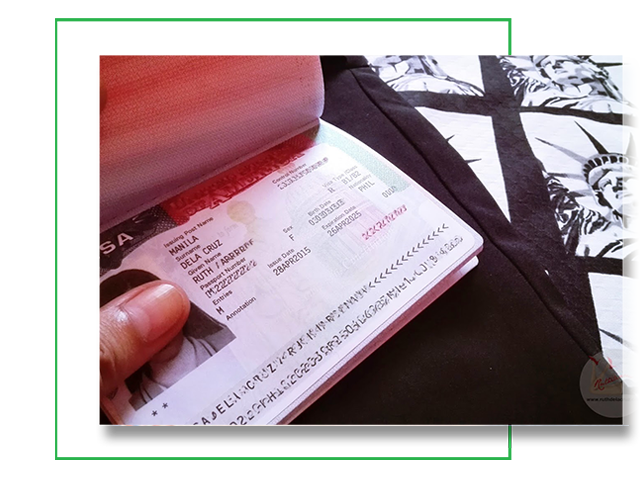US Student F-1 and
M-1 Visa Categories
- F-1 Visa For full time students studying at an academic institution such as a school, college, or university.
- M-1 visa For full time students studying at a non-academic or vocational insitution, such as a technical college.


Please see our F-1 Visa and M-1 visa guides for information on eligibility requirements and application advice for these visas.
minimize your documents
Australia has some of the best universities in its country. These universities have ranked among the top 100 universities in the world. Some of these universities have earned a good reputation worldwide for their excellent faculty, diverse subjects, and research facilities. Some of the best researches in the world are produced in this country.
follow client payments
Click edit button to change this text. Lorem ipsum dolor sit amet, consectetur adipiscing elit. Ut elit tellus luctus nec
saved to the cloud
Click edit button to change this text. Lorem ipsum dolor sit amet, consectetur adipiscing elit. Ut elit tellus luctus nec
automate repeating tasks
Click edit button to change this text. Lorem ipsum dolor sit amet, consectetur adipiscing elit. Ut elit tellus luctus nec
US F-1 Student Visa
Eligibility
- Having evidence that you can pay your tuition fees and living costs during your stay, such as bank statements
- A passport style photograph
- Having a residence in your home country, and intending to return there when your studies are completed
- Having strong ties to your home country, such as family, assets, and a job offer on completion of your studies
- Having a confirmed place at a US school or university, as well as a copy of Form I-20
Form I-20
International students wanting to study in the US must have a copy of 'Form I-20 Certificate of Eligibility for Nonimmigrant Student Status'. The form must be provided by the school or university offering a place.
International students wanting to study in the US must have a copy of 'Form I-20 Certificate of Eligibility for Nonimmigrant Student Status'. The form must be provided by the school or university offering a place. Students can only study at the institution and for the length of time noted on Form I-20, but can apply to transfer to a university if their original course of study was at a US college.
Type of study
F-1 students may study academic programs and language courses of 18 hours per week or more, which award a recognised diploma, degree, or certificate.
F-1 students may study academic programs and language courses of 18 hours per week or more, which award a recognised diploma, degree, or certificate.
Students on this visa may study on a long-term or short-term basis.
Length of stay
Students on this visa may remain in the US for the full length of their studies as noted on their copy of Form I-20.
Students on this visa may remain in the US for the full length of their studies as noted on their copy of Form I-20. The one exception is for students at publicly funded secondary schools, who are limited to a stay of 12 months or less; students at privately funded secondary schools do not have the restriction.
Students may arrive in the US 30 days before the start of their studies, and may remain for 60 days after completion.
Costs
F-1 students must pay the full cost of their program before commencing their studies. This includes students at publicly funded secondary schools.
Students on this visa may remain in the US for the full length of their studies as noted on their copy of Form I-20. The one exception is for students at publicly funded secondary schools, who are limited to a stay of 12 months or less; students at privately funded secondary schools do not have the restriction.
Students may arrive in the US 30 days before the start of their studies, and may remain for 60 days after completion.
Work
- Curricular practical training (CPT); such as internships and employment in your field of study.
- Optional practical training (OPT); OPT covers work similar to CPT but is usually done on a full time basis after the completion of your academic program (known as post-completion OPT). Pre-completion OPT is less common, and is usually undertaken by students who for some reason do not qualify for CPT.
US M-1 Student Visa

Eligibility
- Having evidence that you can pay your tuition fees and living costs during your stay, such as bank statements
- A passport style photograph
- Having a residence in your home country, and intending to return there when your studies are completed
- Having strong ties to your home country, such as family, assets, and a job offer on completion of your studies
- Having a confirmed place at a US technical college or other recognised vocational education institution, as well as a copy of Form I-20
Form I-20
International students wanting to study in the US must have a copy of 'Form I-20 Certificate of Eligibility for Nonimmigrant Student Status'. The form must be provided by the techinical college or other institution offering a place.
International students wanting to study in the US must have a copy of 'Form I-20 Certificate of Eligibility for Nonimmigrant Student Status'. The form must be provided by the techinical college or other institution offering a place. Students can only study at the institution and for the length of time noted on Form I-20.
Type of study
M-1 students may study vocational programs of 18 hours per week or more, which award a recognized diploma or certificate.
M-1 students may study vocational programs of 18 hours per week or more, which award a recognized diploma or certificate.Students on this visa may study on a long-term or short-term basis.
Length of stay
Students on this visa may remain in the US for the full length of their studies as noted on their copy of Form I-20, up to a maximum initial period of one year. The visa can then be extended for another 2 years, to a maximum total period of 3 years, if this time is required to complete the course.
Students on this visa may remain in the US for the full length of their studies as noted on their copy of Form I-20, up to a maximum initial period of one year. The visa can then be extended for another 2 years, to a maximum total period of 3 years, if this time is required to complete the course.Students may arrive in the US 30 days before the start of their studies, and may remain for 30 days after completion. M-1 students can also apply to extend their visa in order to engage in practical training after their studies have ended. Students are entitled to 1 month's practical training for every 4 months of study, up to a maximum of 6 months.
Costs
M-1 students must pay the full cost of their program before commencing their studies.
M-1 students must pay the full cost of their program before commencing their studies.
Work
M-1 students cannot work while they study. However, when their vocational studies have finished, M-1 students can work full time in a practical training role that is related to their vocation.
Students are entitled to 1 month’s practical training for every 4 months of study – up to a maximum of 6 months – and must apply for the Designated School Officer’s permission, and for a visa extension to cover the training period.
